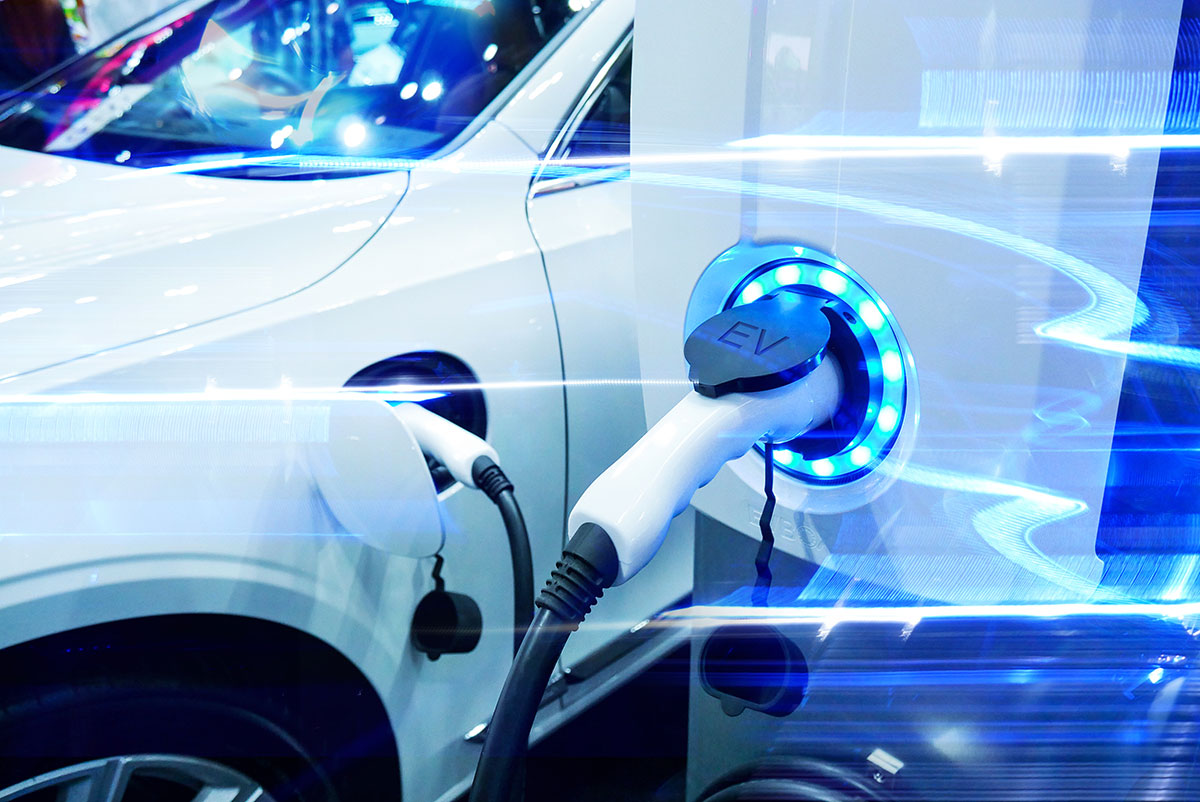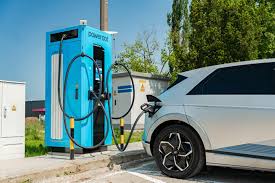The Rise of Autonomous Vehicles IN USA

Autonomous vehicles (AVs), also known as self-driving cars, are rapidly becoming a focal point in the transportation industry. With the promise of reducing human error, increasing safety, and revolutionizing the way we travel, autonomous vehicles are poised to reshape urban mobility and long-distance travel. The technology behind AVs is evolving at a fast pace, and many companies, from traditional automakers to tech giants, are heavily investing in their development. In this article, we will explore the rise of autonomous vehicles, the technology that powers them, the benefits and challenges they present, and how they are likely to transform the future of transportation.
1. What Are Autonomous Vehicles?
- Definition and Levels of Autonomy
- Autonomous vehicles are vehicles that are capable of sensing their environment and operating without human intervention. They use a combination of sensors, cameras, radar, lidar, and machine learning algorithms to navigate, detect obstacles, and make real-time decisions.
- AVs are classified into levels of autonomy, ranging from Level 0 (no automation) to Level 5 (full automation). The levels, as defined by the Society of Automotive Engineers (SAE), are based on the degree of human involvement in the driving process.
- At Level 5, the vehicle is fully autonomous and does not require any human intervention or oversight. In contrast, at lower levels, the driver may still be required to monitor and intervene in certain situations.
- How Autonomous Vehicles Work
- Autonomous vehicles rely on a range of technologies to perceive their environment and make driving decisions. These include:
- Sensors and Cameras: Used to detect surrounding objects, traffic signals, pedestrians, and road conditions.
- Radar and Lidar: Provide accurate distance measurements and help the vehicle detect obstacles even in low-visibility conditions.
- Artificial Intelligence (AI) and Machine Learning: Process the data from sensors and cameras, enabling the vehicle to understand its surroundings, make decisions, and predict future movements.
- Maps and GPS: Help the vehicle navigate accurately, especially for long-distance driving or in complex urban environments.
- Autonomous vehicles rely on a range of technologies to perceive their environment and make driving decisions. These include:
2. Key Technologies Behind Autonomous Vehicles
- Sensors and Perception Systems
- The backbone of any autonomous vehicle is its perception system. This system includes a variety of sensors such as cameras, radar, and lidar, which help the vehicle “see” and understand its surroundings. These sensors provide real-time data on other vehicles, pedestrians, traffic signals, road markings, and even weather conditions.
- Cameras are essential for visual recognition, detecting objects and reading road signs. Radar is used for detecting objects in the vehicle’s path, while lidar uses laser light to create detailed 3D maps of the environment.
- Machine Learning and AI Algorithms
- Machine learning plays a crucial role in the functioning of autonomous vehicles. The vast amount of data gathered by sensors and cameras is processed using machine learning algorithms that help the vehicle make decisions in real-time.
- Over time, these algorithms “learn” from experience, becoming more accurate in identifying objects, predicting behavior, and making decisions based on different driving scenarios. This continuous learning process allows AVs to improve their performance and handle complex situations with greater accuracy.
- Connectivity and V2X Communication
- Autonomous vehicles are also equipped with connectivity systems that allow them to communicate with other vehicles, infrastructure, and even pedestrians. Vehicle-to-everything (V2X) communication enables AVs to share data about their location, speed, and trajectory, improving safety and coordination between vehicles.
- V2X communication allows autonomous vehicles to anticipate the actions of other road users, such as when another vehicle is turning or stopping, further enhancing their decision-making capabilities.
3. Benefits of Autonomous Vehicles
- Improved Safety and Reduced Traffic Accidents
- One of the most significant advantages of autonomous vehicles is their potential to reduce traffic accidents caused by human error. According to studies, approximately 94% of traffic accidents are caused by human mistakes, such as distracted driving, impaired driving, or fatigue.
- AVs are designed to eliminate these risks by using advanced sensors and algorithms to detect hazards and respond faster than a human driver. In theory, this could result in a significant reduction in road fatalities and injuries.
- Increased Mobility and Accessibility
- Autonomous vehicles have the potential to provide increased mobility for people who are unable to drive, such as the elderly, disabled, or individuals with medical conditions. AVs can enable greater independence for these individuals, allowing them to travel without needing a driver.
- Additionally, AVs could make transportation more accessible in areas with limited public transit options, improving the overall mobility landscape, especially in rural or underserved communities.
- Reduced Traffic Congestion and Improved Efficiency
- Autonomous vehicles can help reduce traffic congestion by optimizing driving patterns. AVs can communicate with each other and synchronize their movements, reducing bottlenecks and improving the flow of traffic.
- Self-driving cars can also reduce the need for parking by allowing vehicles to drop passengers off at their destination and then proceed to park autonomously in nearby areas. This could free up valuable urban space and reduce the number of cars circulating in city centers.
- Environmental Benefits
- Many autonomous vehicles are being designed as electric vehicles (EVs), which means they have the potential to reduce carbon emissions and contribute to a cleaner environment.
- AVs can also improve fuel efficiency by optimizing driving behavior, such as reducing unnecessary acceleration and braking, and following the most efficient routes.
4. Challenges and Obstacles to the Widespread Adoption of AVs
- Technical Challenges
- While autonomous vehicles have made significant progress, there are still several technical challenges to overcome. For example, AVs must be able to handle complex, dynamic environments, including unpredictable weather conditions, construction zones, and non-standard road markings.
- Ensuring that AVs can safely navigate such environments requires continual improvements in sensor accuracy, machine learning algorithms, and real-time data processing.
- Regulatory and Legal Issues
- The widespread adoption of autonomous vehicles will require a comprehensive regulatory framework to ensure their safety, reliability, and compliance with traffic laws. Governments around the world will need to develop clear guidelines for the testing, deployment, and operation of AVs.
- Legal issues also arise regarding liability in the event of an accident involving an autonomous vehicle. Determining responsibility and compensation in such cases will require updates to existing traffic laws and insurance policies.
- Public Trust and Acceptance
- Public trust is another major hurdle for the adoption of autonomous vehicles. Many people are still wary of fully autonomous vehicles, especially when it comes to safety concerns. High-profile incidents, such as accidents involving self-driving cars during testing, have raised questions about the reliability of AV technology.
- Overcoming these concerns will require more testing, transparency, and clear communication about the safety features and capabilities of autonomous vehicles. Public education campaigns and real-world demonstrations will play a key role in building trust in AVs.
- Cybersecurity Risks
- As autonomous vehicles become more connected and integrated into digital networks, they become vulnerable to cybersecurity threats. Hackers could potentially take control of an autonomous vehicle’s systems, putting passengers and others at risk.
- To mitigate these risks, automakers and technology companies will need to invest in robust cybersecurity measures, such as encryption, secure communication protocols, and continuous monitoring to detect and respond to cyber threats.
5. The Future of Autonomous Vehicles
- Integration with Smart Cities
- The future of autonomous vehicles is closely tied to the development of smart cities. As cities become more connected through sensors, data analytics, and Internet of Things (IoT) technologies, autonomous vehicles can integrate seamlessly into the urban ecosystem.
- AVs will be able to communicate with smart infrastructure, such as traffic lights and street signs, to optimize traffic flow, reduce accidents, and improve public services. This integration will create safer, more efficient, and sustainable urban environments.
- Collaboration Between Automakers and Tech Companies
- The development of autonomous vehicles requires expertise from both traditional automakers and tech companies. Automakers bring experience in vehicle design, manufacturing, and safety, while tech companies provide the software, machine learning algorithms, and data infrastructure needed to make AVs a reality.
- As this collaboration continues to evolve, we can expect faster advancements in autonomous driving technology, as well as new business models and services, such as ride-hailing and autonomous delivery services.
- A Shift Toward Mobility as a Service (MaaS)
- In the future, autonomous vehicles could play a key role in the shift toward Mobility as a Service (MaaS). MaaS is a concept that allows users to access transportation services on-demand, without the need for car ownership.
- AVs will enable on-demand ride-hailing services, shared mobility solutions, and autonomous delivery options, making transportation more flexible, efficient, and affordable. This could also lead to fewer vehicles on the road, reducing traffic congestion and emissions.
6. Conclusion
Autonomous vehicles are poised to transform the transportation industry, offering numerous benefits, from improved safety and reduced traffic congestion to greater mobility and environmental sustainability. However, the widespread adoption of AVs faces several challenges, including technical limitations, regulatory hurdles, and public acceptance. As the technology continues to evolve and these challenges are addressed, autonomous vehicles will play an increasingly important role in shaping the future of transportation. With advancements in AI, connectivity, and smart infrastructure, the future of autonomous vehicles promises to create safer, more efficient, and sustainable cities for generations to come.





